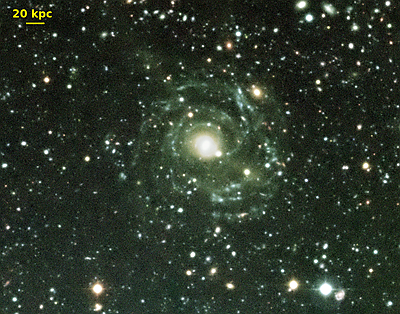A new look at the largest known disk galaxy
2016-10-05In a publication recently accepted in Astronomy and Astrophysics, an international team involving French researchers from the Laboratoire d’Astrophysique de Marseille and Canadian researchers from NRC Herzberg and Queens University have studied Malin 1, a nearby galaxy that has been known only since the eighty's and that shows an extremely large disk of gas and stars. The new observations of Malin 1, a prototype of the class of "giant low surface brightness galaxies" allowed the team to obtain new results in contradiction with one of the hypotheses concerning the formation of this type of galaxies. Because they are very diffuse and of low surface brightness, giant low surface brightness galaxies, yet massive, are difficult to observe and are still poorly known. They could represent a significant percentage of the galaxies in the universe, especially because we could have missed such objects in our galaxy surveys. It is thus important do study them and understand their formation and evolution. This is now possible owing to the new generation of telescopes and modern detectors, with higher sensitivity to low surface brightness than in the past. This paper presents for the first time deep images obtained at 6 different wavelengths, from the UV of the GUViCS project to the optical and near-infrared obtained in the context of the Next Generation Virgo Survey with MegaCam on CFHT. Originally, these large observational campaigns were planned to study the Virgo cluster, but they also allow us to study background objects like Malin 1. The images offer us a new view of this spectacular galaxy, the largest galactic disk known, with a diameter above 250 kilo-parsec (in comparison, our Milky Way is only about 30 kpc wide).

For more information about this study, visit:

 Search
Search

